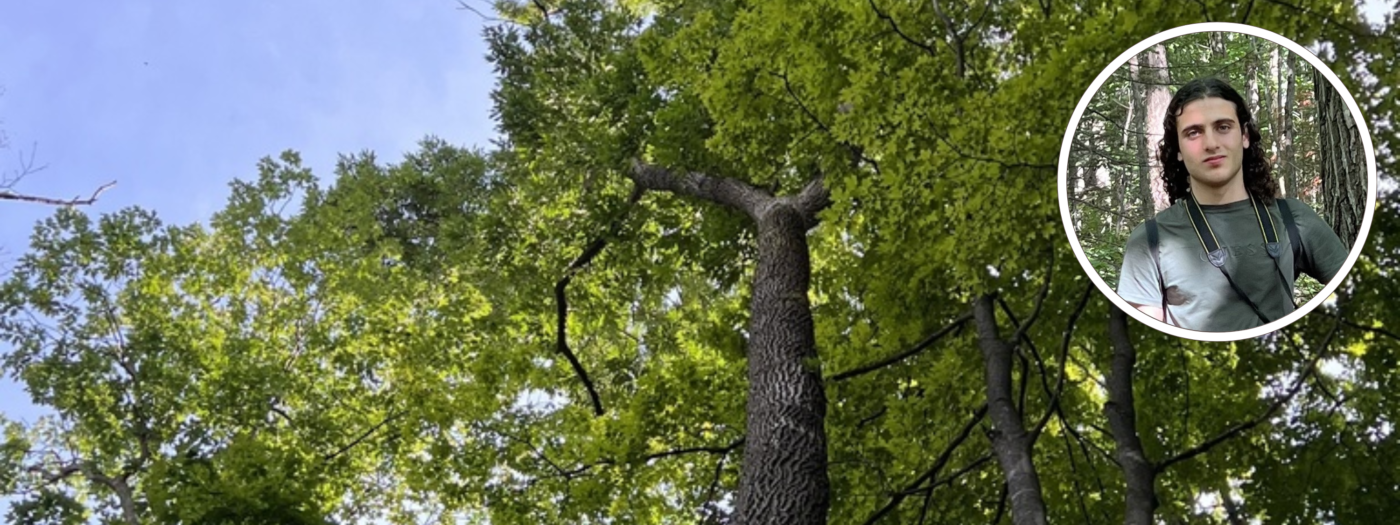Introduction
Ash trees (Fraxinus sp.) are a foundational tree species around Lake Couchiching and throughout the entire Great Lakes Region. They are observed in large numbers in a wide variety of ecosystems, including moist forests, meadows, alvars, floodplains and swamps. In aquatic ecosystems, the fallen leaves of many ash species (due to their lack of tannins) are important for the healthy development of tadpoles. Ash trees have wind-pollinated flowers, which appear in May. Winged seeds mature in July and August, providing food for many birds, including grosbeaks, quail, and wild turkeys. Ashes are among the showiest of Ontario’s deciduous trees in autumn, with a comparatively beautiful display of colors to Red Maple (Acer rubrum) and Sugar Maple (Acer saccharum). All ash trees in Ontario have opposite, compound leaves, which distinguishes ashes from many other native tree species (the term opposite indicates leaves are borne in pairs, whilst compound indicates the leaves consist of multiple leaflets on a central stalk).
Ecology of Emerald Ash Borer
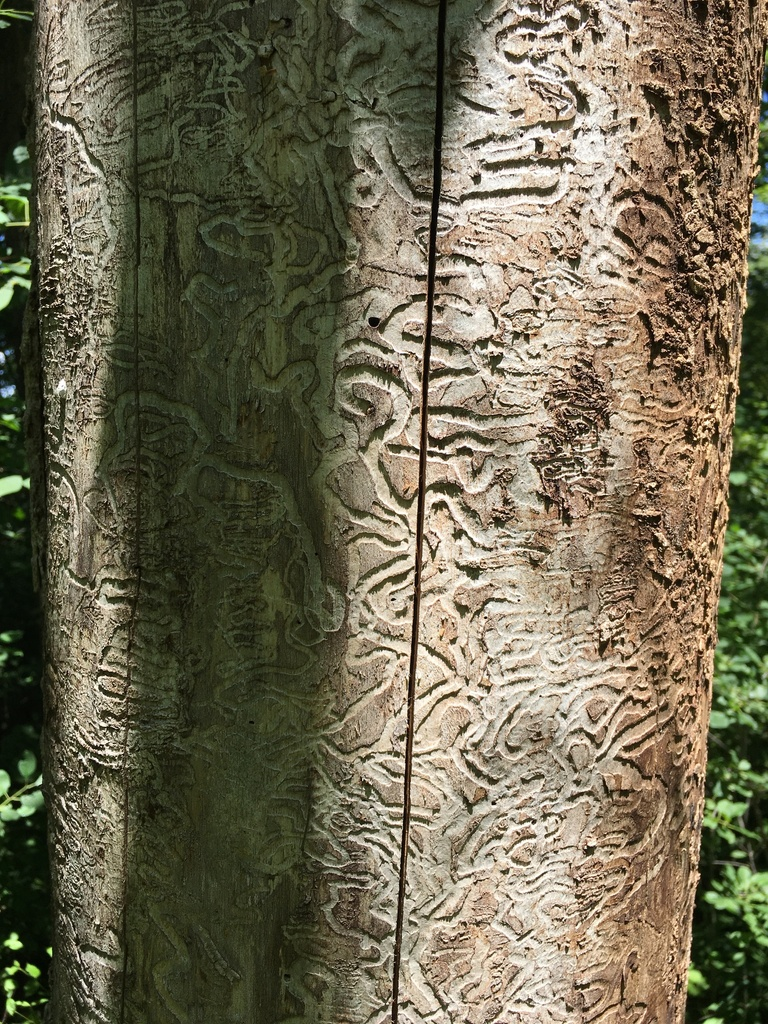
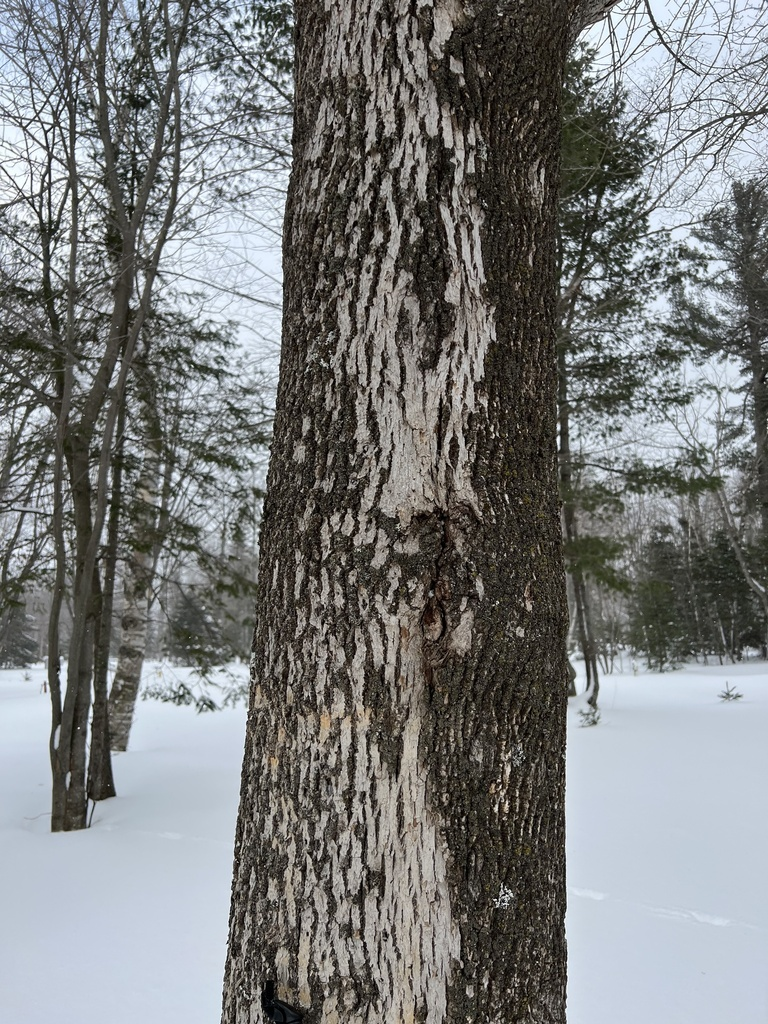

Unfortunately (as many are already aware of), many of Ontario’s forests are currently infested with Emerald Ash Borer (EAB; Agrilus planipennis), a species of jewel beetle (buprestid) native to Japan, Korea, Northeast China, and Southeastern Siberia (the Primorysky and Khabarovsk Oblasts, as well as Sakhalin Island in the Russian Far East). In its native range, Emerald Ash Borer larvae consume the bark of Manchurian Ash (Fraxinus mandshurica), a closely related species to Ontario’s native Black Ash (Fraxinus nigra). Unlike in North America, Emerald Ash Borer rarely incurs mass mortality of ash trees in its native range, primarily due to insecticidal defenses produced by Manchurian Ash, as well as EAB mortality induced by insect predators, especially parasitoid wasps.
Since its introduction to Detroit, MI in mid 1990s (through the transport of untreated hardwood lumber), Emerald Ash Borer has been producing large amounts of mortality of mature ash trees in Eastern North America, of which all species except Blue Ash (Fraxinus quadrangulata) are strongly impacted by the presence of EAB. In the spring, adult ash borers feed and mate on the ash foliage. After mating has occurred, female ash borers lay their eggs on the bark surface of large ash trees. The larvae of Emerald Ash Borer kill ash trees (if present in high densities) by girdling the tree through feeding on the phloem. In northern areas, the full life cycle is two years, but in southern regions, where the growing season is longer, EAB larvae only take one year to mature. An indication of EAB infected trees is the stripping of the bark (and exposure of lighter coloured, younger bark), which is caused by woodpeckers feeding on EAB larvae. Though woodpeckers can cause substantial mortality of EAB larvae (up to ~60%, in some situations), this predation does not prevent mortality of severely infested trees. Heavily infested trees usually die within 5 years. As of 2023, EAB has spread throughout southern Ontario and along the north shore of Lake Huron.
A few key considerations are likely explanatory for the EAB-induced ash decline. Firstly, there is little host resistance in native ash trees (compared to Manchurian Ash), as many native ash species lack insecticidal defenses against EAB, a product of thousands of years of coevolution. Secondly, native insect predators are much less effective in controlling the populations of EAB, allowing population expansion to levels where entire forests of healthy trees can be killed within a short time period.
Status of Ash Populations across Ontario following EAB invasion:
Although EAB is widely distributed, the status of ash forests remains widely across Ontario. Over 90% of native Ash trees in Ontario’s southernmost areas (the Lake Erie region, situated south of London) have been killed by EAB, although the proportion of ash mortality varies widely between different woodlots (Knight, 2013).
In the Lake Couchiching area, the decline of Ash has not been nearly as severe (yet?). Many large overstory ash trees remain alive as of 2023, although large declines and mortality have been witnessed in urban areas and along major roads and highways, especially along Highway 400 near Barrie (King, 2018). Some of Couchiching Conservancy’s more southerly nature reserves, including Church Woods Nature Reserve, have witnessed high mortality. Northwards, Awenda Provincial Park still hosts large populations of ash trees, and the situation is similar eastwards towards Peterborough County. As of 2024, areas in the southern part of Simcoe County have observed a large degree (often >50%) of ash mortality from EAB, with impacts lessening northwards, where many large ash are alive and in healthy condition (Cooper, 2024). It is still too early to fully understand the complete impact of EAB on local ash populations around Lake Couchiching.
Further west, ash populations on the Saugeen (Bruce) Peninsula are heavily impacted by EAB, but many large specimens remain alive. Oddly enough, the insect hasn’t been as impactful in Grey County further south, where large populations of ash remain in good condition, especially around Kinghurst Forest. In Lake Huron, Manitoulin Island hosts one of the largest healthy ash populations remaining in Ontario, making their conservation of paramount concern.
Lingering ash (large, healthy ash trees remaining in good condition many years after the infestation of an area) have been recorded in many areas of southwestern Ontario. These trees typically constitute up to 10% of the original ash population, although the proportion can be much higher in some areas. Most lingering ash trees are White Ash (Fraxinus americana), which has a slightly higher amount of natural resistance to EAB than both Green Ash or Black Ash.
In most areas where Ash is present (including areas heavily impacted by EAB), there is a substantial population of regenerating ash seedlings and saplings in the understory. Due to their small size, which makes them unsuitable for EAB larval development, ash saplings are not killed by EAB. These trees are likely to replace dead ash trees if EAB populations are kept below a killing threshold (which may occur naturally, or through biocontrol efforts). Thus there is hope that there will again be a healthy Ash component in many of Ontario’s forests a few decades into the future.
Introduced Parasitoid Wasps and Biocontrol Releases
To combat Emerald Ash Borer, scientists have released 4 species of Northeast Asian parasitoid wasps that almost exclusively feed on Emerald Ash Borer. These introduced parasitoids are intended to serve as a biocontrol, reducing Emerald Ash Borer populations to lower densities, where EAB and Ash can sustainably co-exist. The wasps are not expected to completely eliminate EAB. In heavily EAB infested, hard-hit regions, introduced wasps will not salvage large trees, but the understory population of ash trees can be salvaged through the effective utilization of biocontrol. Additionally, future mortality of Ash trees in less infested regions can be minimized through the timely introduction of biocontrols. High parasitism rates of EAB larvae (in many instances over 50%) have been recorded in both Northeast Asia and North America. Scientists have reported that these biocontrol insects are spreading quickly across the landscape, and it is likely that the introduced parasitoid wasps will eventually be present throughout the entire Great Lakes region.
Initially 3 parasitoid wasps were introduced for the purpose of EAB population control: Tetrastichus planipennisi (from Siberia), Spathius agrili (from China)and Oobius agrili (from Siberia). T. planipennisi and S. agrili are larval endoparasites, inserting their eggs directly into EAB larvae, and like other parasitoids, the wasp larvae subsequently consume the EAB larva from the inside out, killing the EAB larva in the process. In contrast, Oobius agrili is an egg parasitoid, reducing the number of EAB eggs that hatch in an EAB population. Of all these species, Tetrastichus planipennisi had the highest establishment success rate. S. agrili was not able to survive the harsh Great Lakes winters, so another endoparasitoid of the same genus, S. galinae (from Siberia) was introduced in subsequent years, and has established successfully in the Great Lakes region.
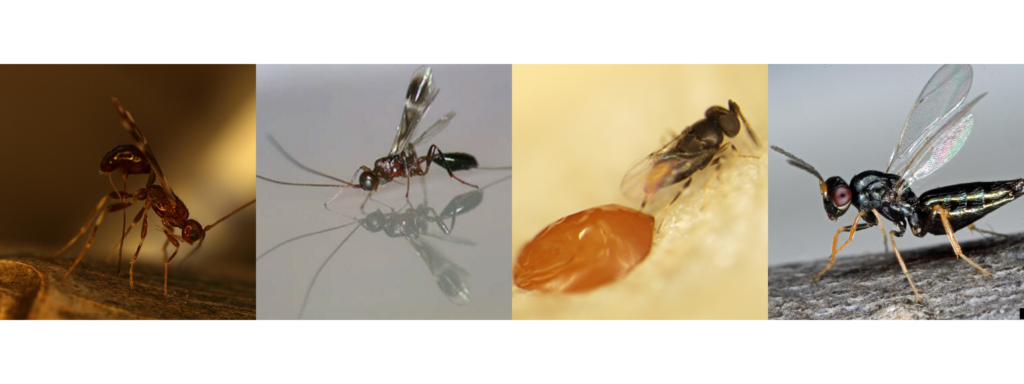
White Ash (Fraxinus americana)
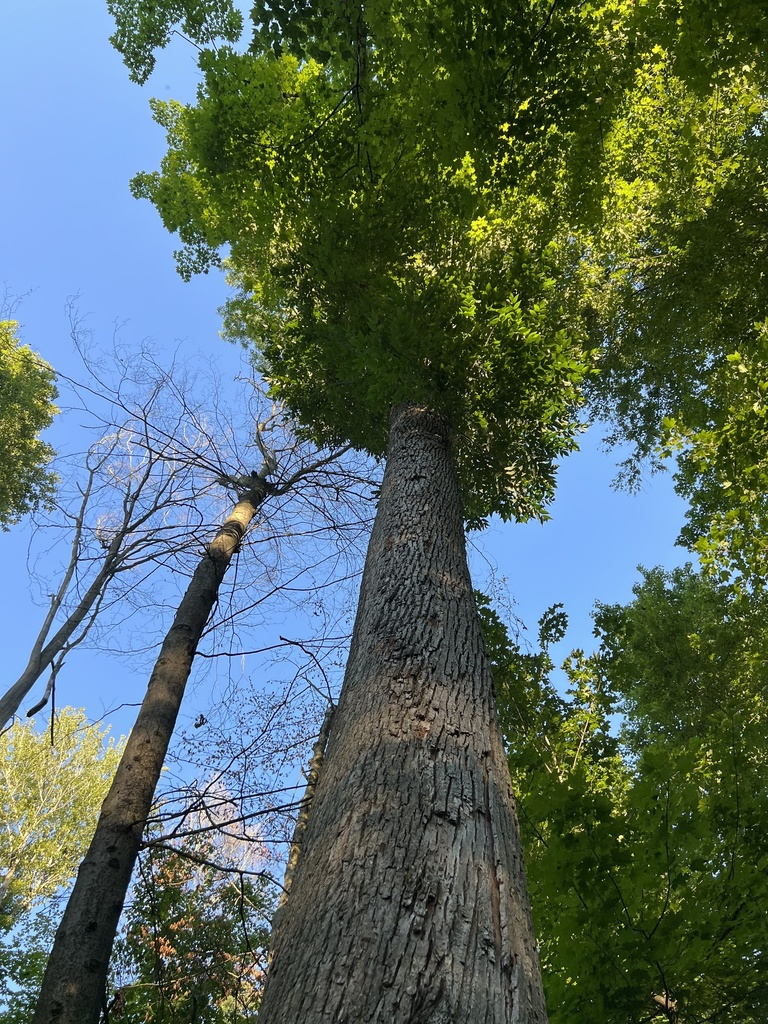
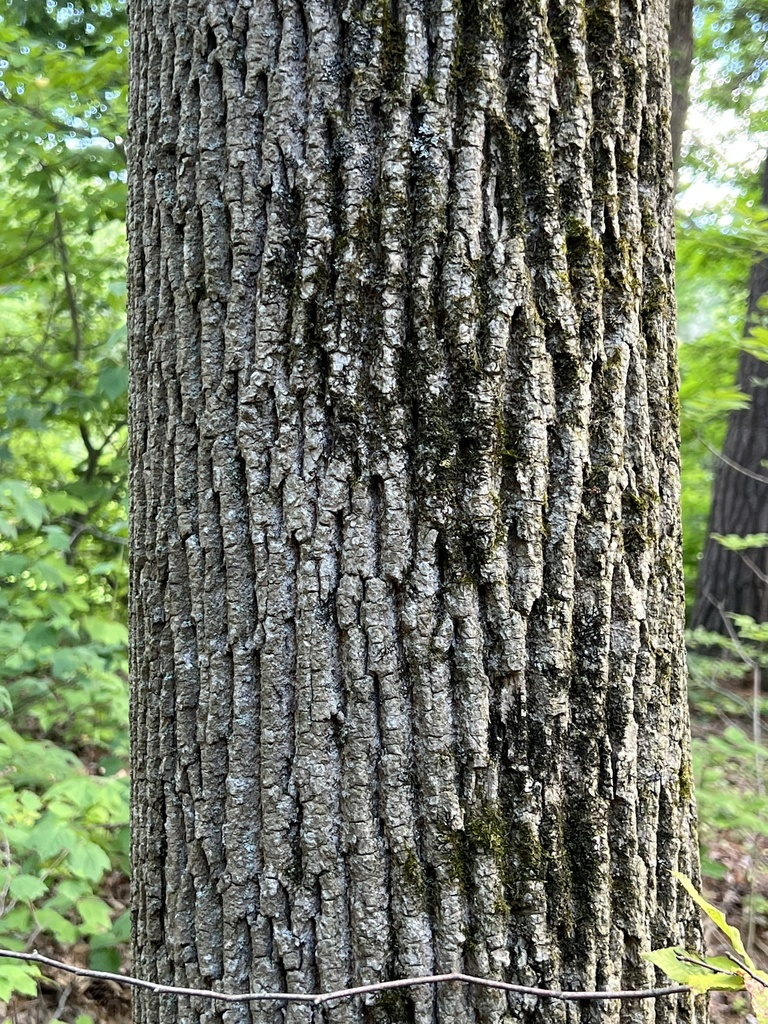
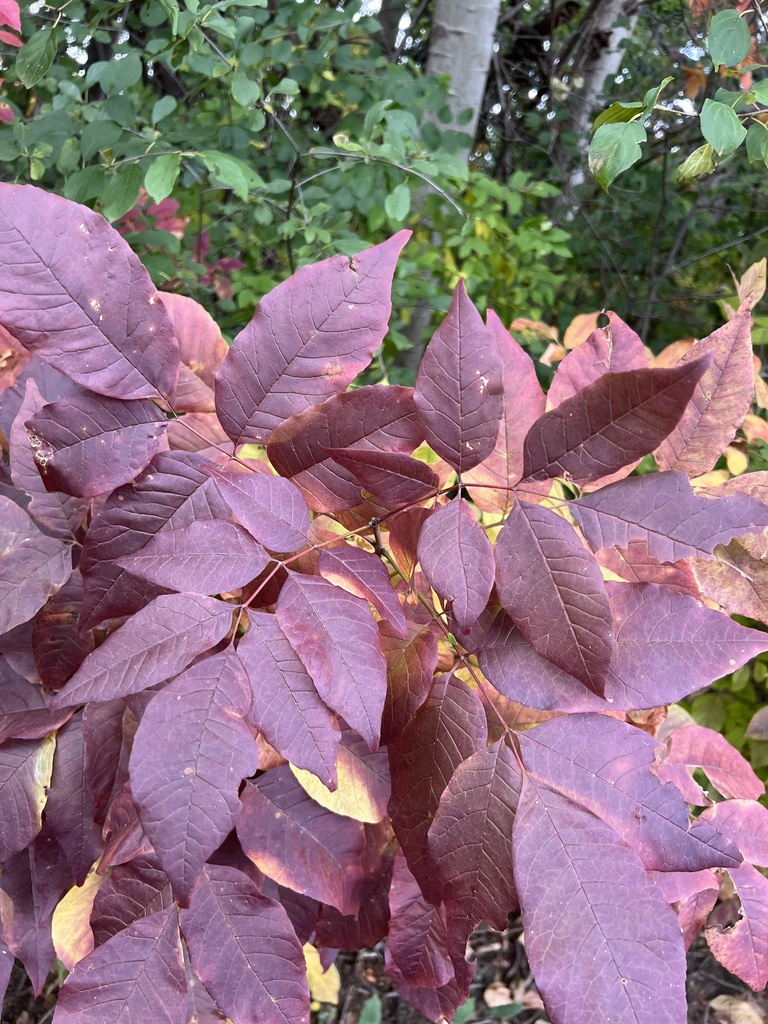
White Ash is the most common ash species around Lake Couchiching and in most other areas in Ontario. It prefers moist upland areas, where it often grows alongside Sugar Maple, American Beech (Fagus grandifolia) and Red Oak (Quercus rubra). It also grows well on floodplains if they are well-drained and not inundated for most of the year. White Ash bark is composed of intersecting, “diamond-shaped” ridges. Leaflets are clearly separate from the central stalk, which distinguishes the species from Black Ash. The leaf margins of White Ash have rounded teeth, unlike Green Ash, which has pointed teeth. The tallest White Ash trees can grow up to 40 m in height, often towering above the surrounding canopy trees. Young saplings are shade tolerant, making them abundant in forest understories. In the autumn, White Ash trees will often transform into a brilliant burgundy color, making them among the showiest of all trees.
Green Ash (Fraxinus pennsylvanica)
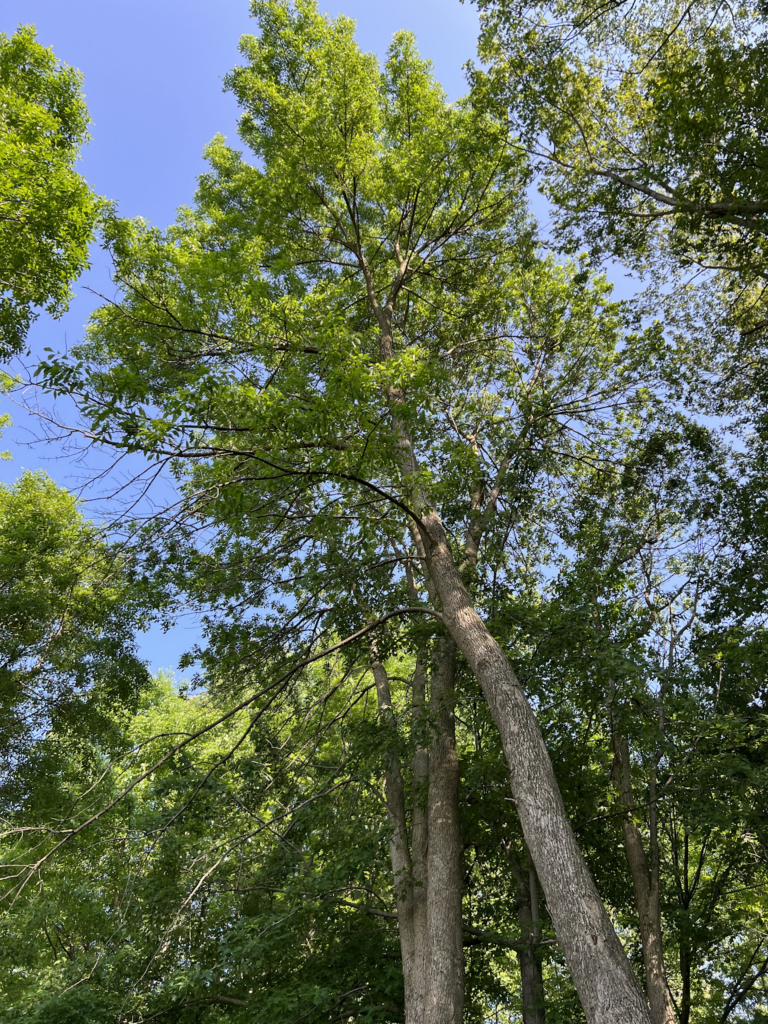
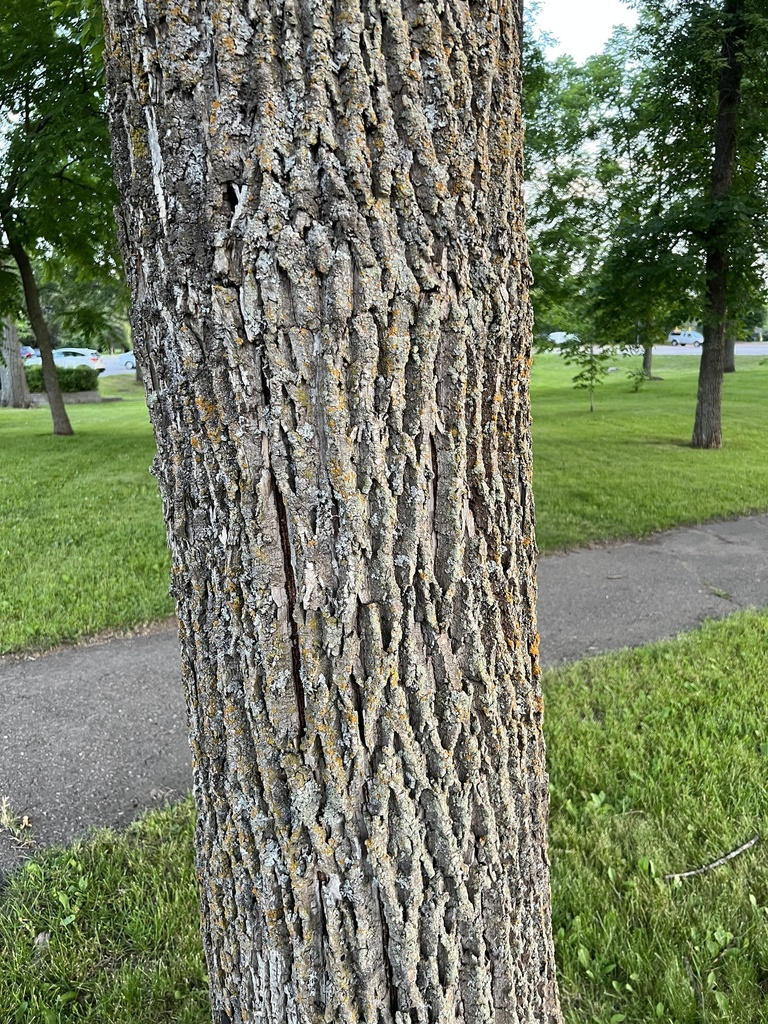
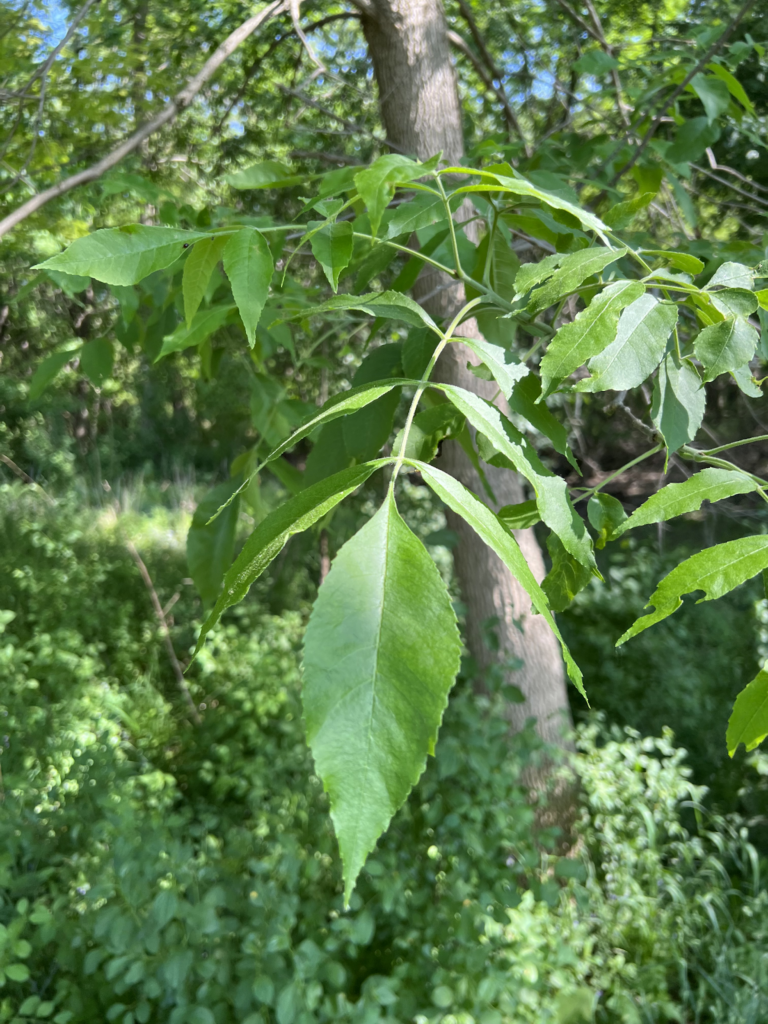
Green Ash (Fraxinus pennsylvanica) is one of two ash trees frequently observed in swamps, along with Black Ash. Outside swamps, Green Ash occurs in a wide variety of habitats, including wet floodplains, moist forests, meadows and alvars (limestone plains with very thin soil and exposed bedrock). In addition, it is often planted in residential avenues and municipal parks. Like White Ash, the bark of Green Ash is fissured, but Green Ash does not show diamond shaped bark patterns as frequently as the aforementioned species. Each Green Ash leaf typically consists of 7-11 leaflets, which have toothed (pointed) margins and are separated from the central stalk. Green Ash grows up to 30 m in height. In autumn, Green Ash foliage will turn yellow (but never red or purple like White Ash). Unlike many native tree species (but like poplars and soft maples), both Green Ash and White Ash have separate male and female trees, with male trees producing pollen only. Female trees produce no pollen, but bear heavy crops of seeds – an important food source for many wildlife species.
Black Ash (Fraxinus nigra)
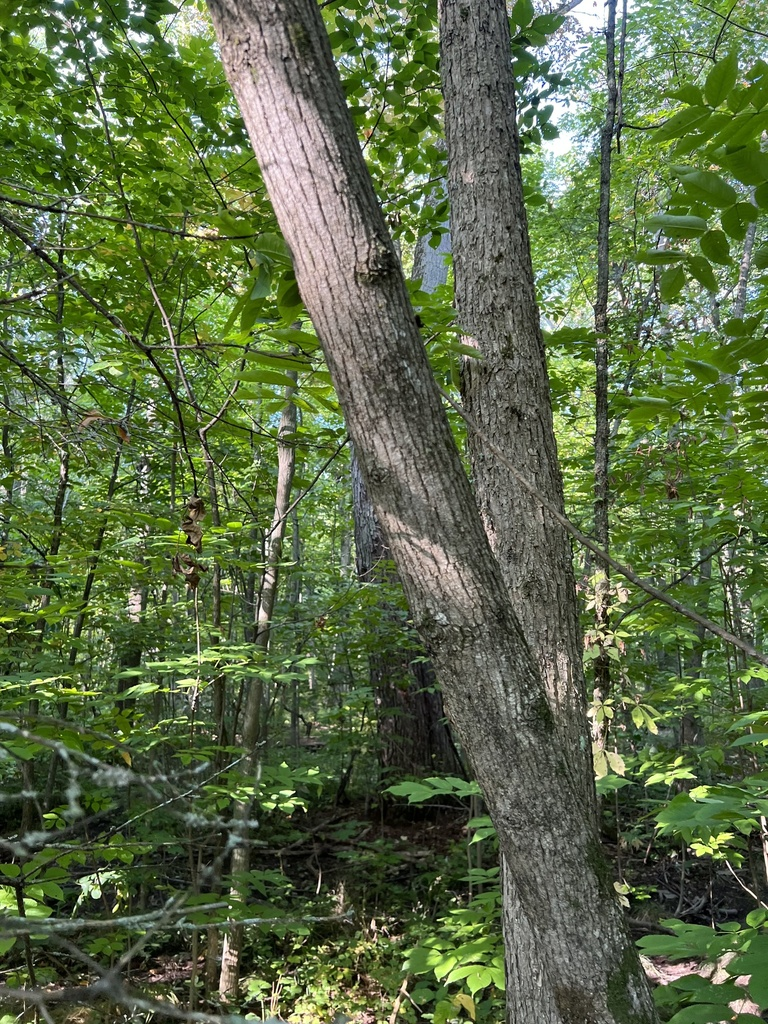
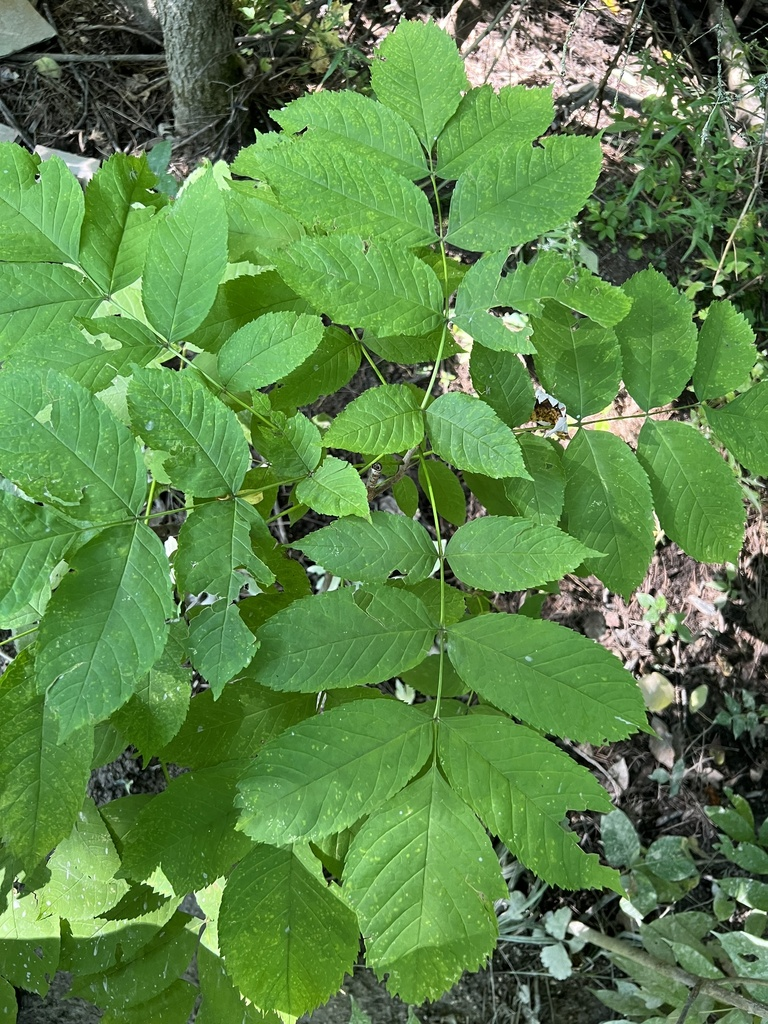
Black Ash almost always grows in moist or wet habitats, with the highest abundances being observed in swamps that are seasonally flooded. Black Ash will also tolerate floodplains inundated with water for many months of the year. The bark of black ash consisted of scaly plates and corky ridges – substantially different from the other native ash species. Leaves of Black Ash typically consist of 9-13 leaflets – higher on average than other species. Black Ash leaflets directly attached to the central stalk (without any petioles), which is very helpful in distinguishing the species from White Ash and Green Ash. Anishinaabe peoples utilize the bark of Black Ash for basketry (in Black Ash, fibers do not connect individual growth rings, making this tree especially suited for the purpose of basket-making). In autumn, the leaves of Black Ash turn yellow. Black Ash grows up to 30 m tall in the wild. Due to its similarity to the East Asian Manchurian Ash, Black Ash is the preferred host by the Emerald Ash Borer.
Blue Ash (Fraxinus quadrangulata)
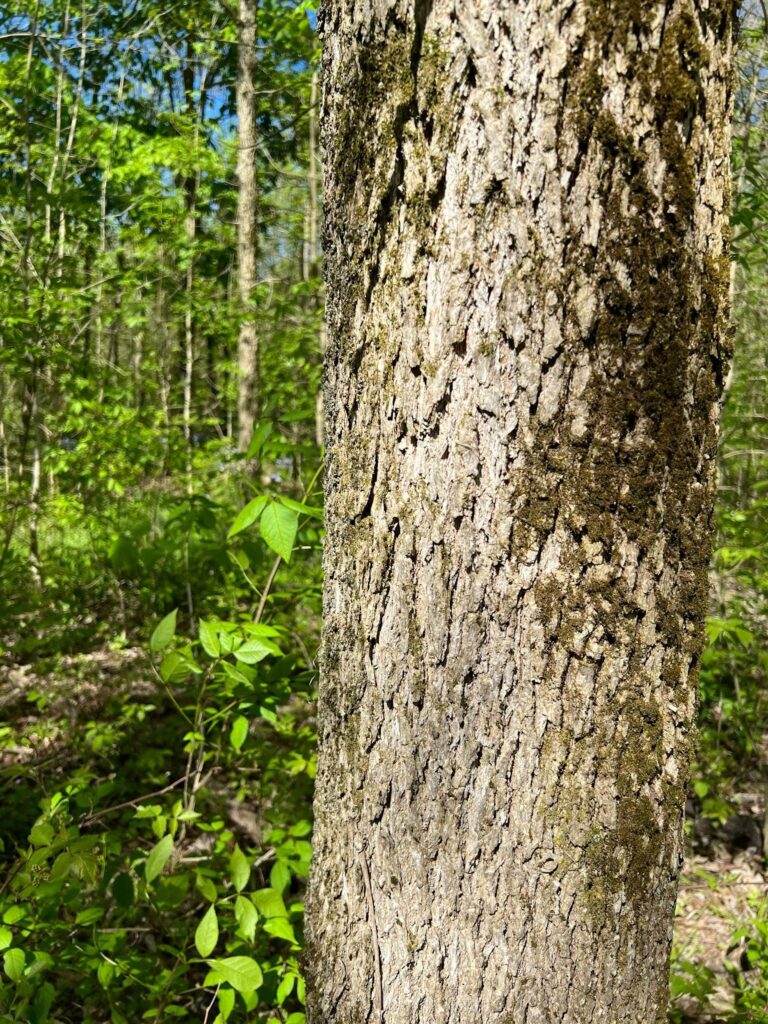
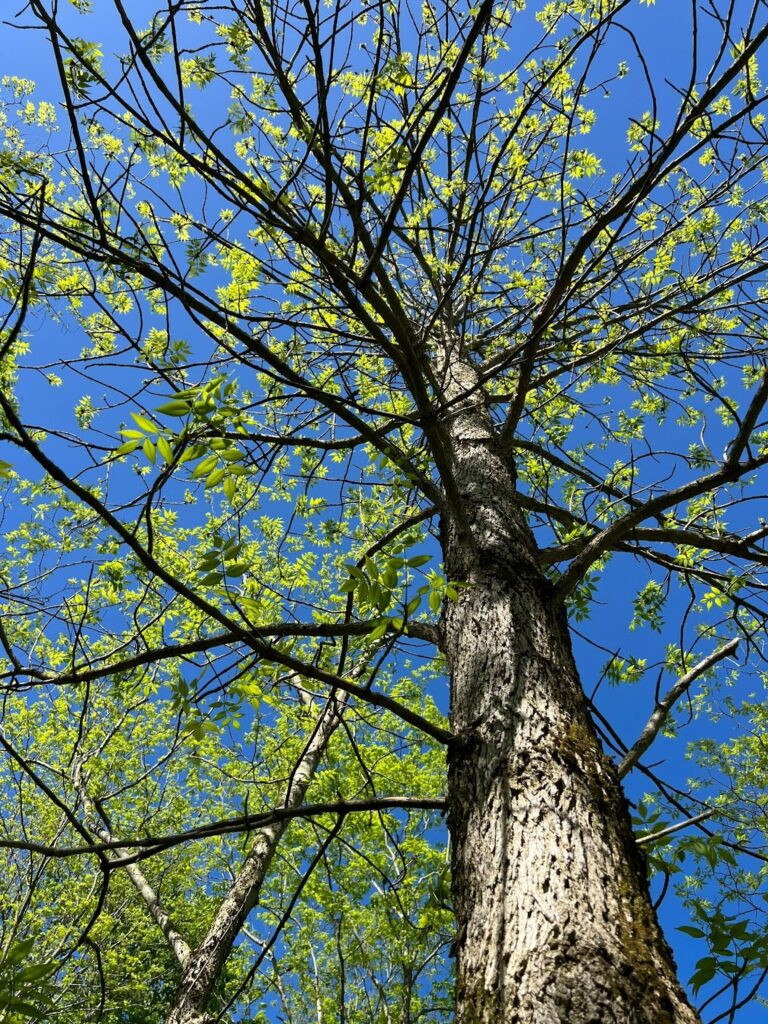
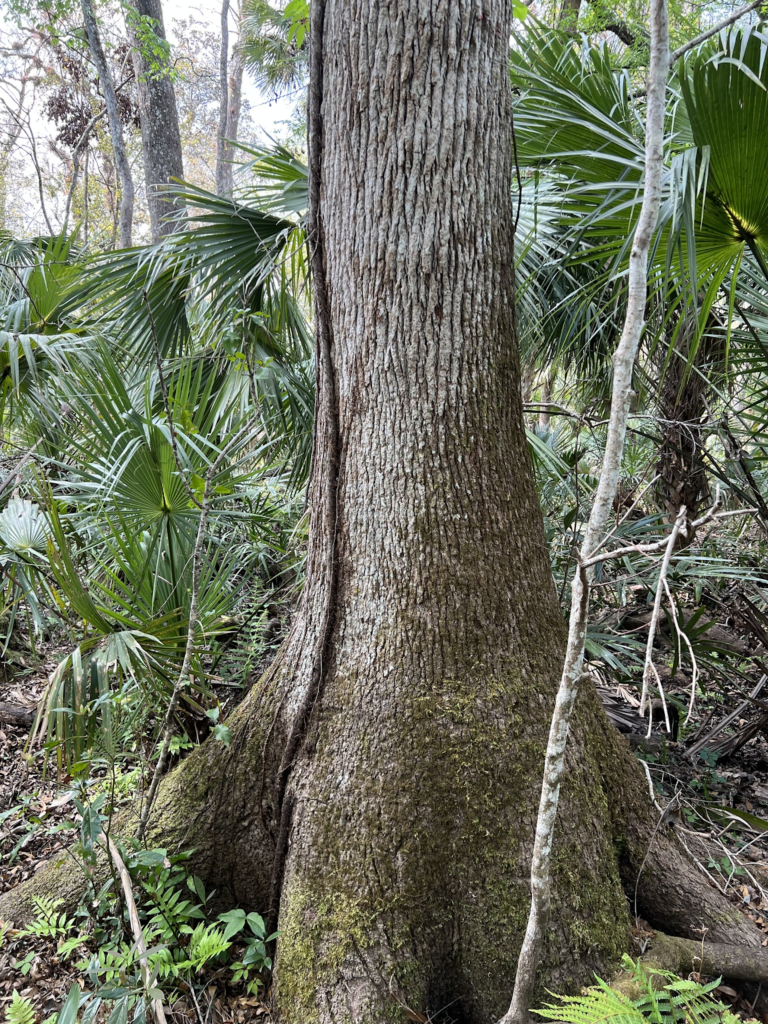
Blue Ash is not native to the Couchiching Area, being restricted to the Lake Erie Lowlands ecoregion south of London, Ontario. In its native habitat, Blue Ash will prefer well-drained floodplains, but has tolerance for a wide variety of habitats. On Lake Erie’s Pelee Island, Blue Ash frequently grows on alvars. Blue Ash bark consists of scales and fissures – sufficiently different from Green Ash and White Ash to allow for easy field identification. The scientific name quadrangulata (“four-angled”) describes the twigs of Blue Ash, which are square-shaped. This is probably the easiest identification feature when distinguishing Blue Ash from other native ash species. Blue Ash grows up to a height of 30 m, and turns yellow in the autumn.
Pumpkin Ash (Fraxinus profunda)
Pumpkin Ash (Fraxinus profunda) is also restricted to the Lake Erie ecoregion in Canada, almost exclusively growing within deciduous swamps. It is very similar to Green Ash, except Pumpkin Ash has much bigger leaves, up to 40 cm long. The fruit is also substantially larger than other native ash species, growing up to 20 cm long. The name “pumpkin” comes from the buttressed structures at the base of the tree, which is pumpkin-like in shape. The buttresses are an adaptation to swamp habitat of this species, which is often flooded.
Concluding Remarks
The future status of ash forests in Ontario is largely dependent on the spread of EAB, the severity of EAB infestation, naturally occurring EAB resistance in native ash populations, as well as the effectiveness of native and introduced parasitoids in controlling populations of EAB. Though it will take a long time for large ash trees to regrow in regions hard-hit by EAB, conservation actions, like limiting the spread of firewood across Ontario, and continued biocontrol wasps releases are attempting to minimize EAB-induced ash tree mortality in the future, salvaging these beautiful hardwoods for wildlife and future generations to enjoy.
References:
Cooper, R. (2024). Thousands of trees to be removed from Simcoe County provincial parks. CTV News. Thousands of trees to be removed from Mara and McRae provincial parks in Simcoe County | CTV News
King, M. (2018). Tiny green insect wreaking havoc in Simcoe County’s trees. Orillia Matters.
Knight, K. S., Brown, J. P., & Long, R. P. (2013). Factors affecting the survival of ash (Fraxinus spp.) trees infested by emerald ash borer (Agrilus planipennis). Biological Invasions, 15(2), 371–383. https://doi.org/10.1007/s10530-012-0292-z
Article by Matthew Palarchio
Photos by Matthew Palarchio, unless otherwise indicated with a copyright (©) symbol.
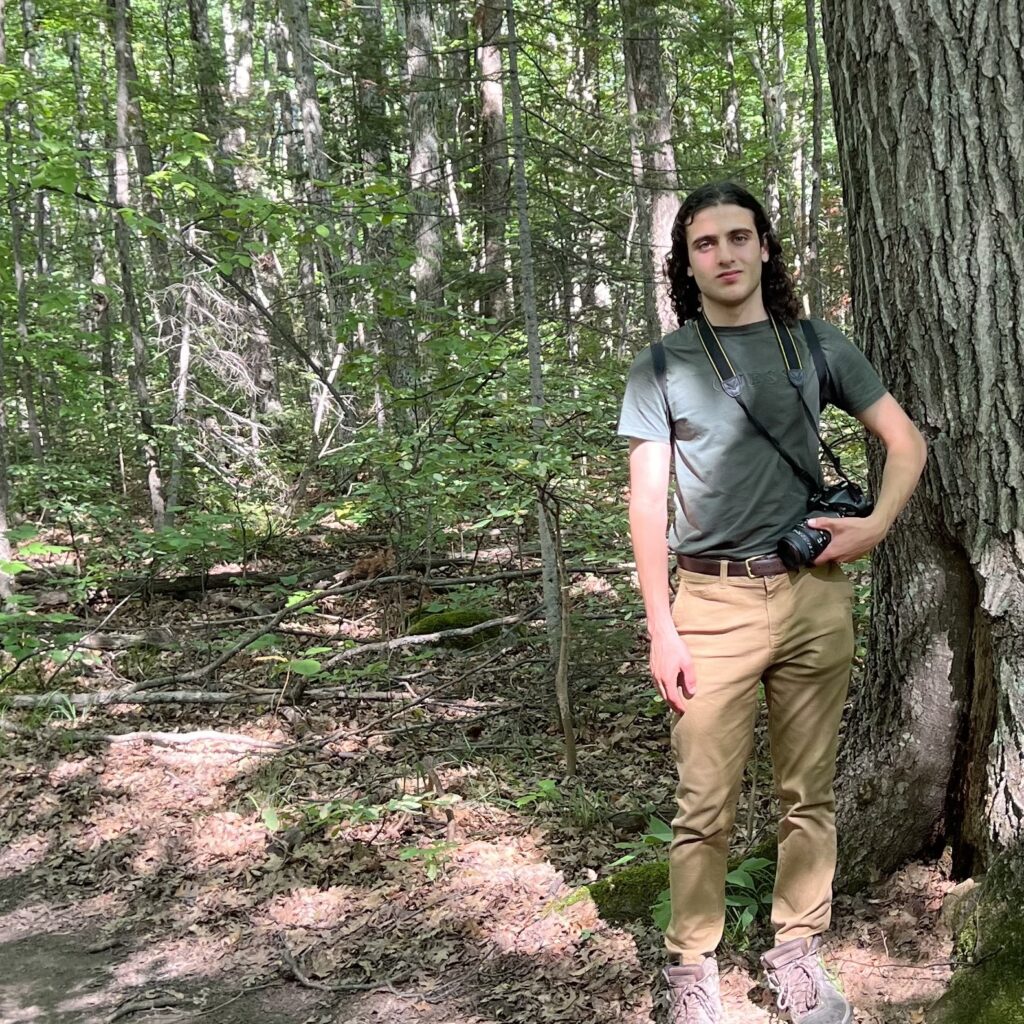
Matthew Palarchio is going into his fourth year of studies at the University of Western Ontario (pursuing an Honours BSc in Environmental Science). Matthew is a dedicated volunteer at several conservation organizations across Ontario, including Thames Talbot Land Trust, Long Point Basin Land Trust, and the Kensington Conservancy. He has previously been involved with Ontario Nature through their youth programme, participating in their Annual Gathering as well as their Youth Summit. Matthew is currently serving as a Director-at-Large with his local Naturalist club – Nature London. Enjoying outdoor activities in all seasons, Matthew is a hiker, skiier, birder and wildlife photographer.

